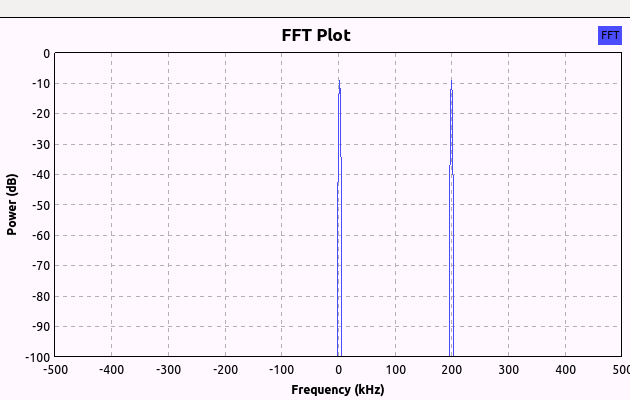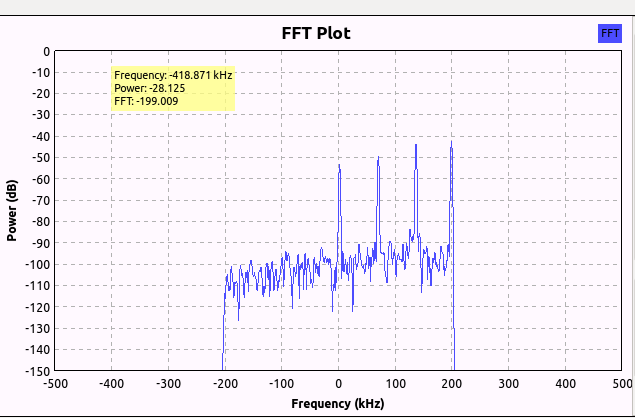I am trying to transmit a multi-tone signal from one USRP (N210) to another and have written an out of tree block to generate the multi tone signals using an ifft. The two USRPs are connected directly via a cable and a $50\ \Omega, 20\textrm{ dB}$-attenuator.
I am finding that the signal is received clearly for 1 and 2 tones but not for 3+ tones. I'm not sure what I can do digitally to make the frequency components are lot more distinct. The received signal is amplified by $10\textrm{ dB}$ and passed through a LPF and I've attached some FFT plots showing the results.
I don't have enough reputation to show the transmitted signals but they are just direct spikes evenly distributed through the bandwidth and very distinct.
The received signals at the USRP are complex and so the FFT plots shown are only the real components.
Flow graph
Relevant graphs for a series of different tones
The number sweep block is an out of tree module that produces the frequency array that is passed into the FFT block.
The two USRPs are connected via a MIMO cable to ensure synchronisation of their clocks.













